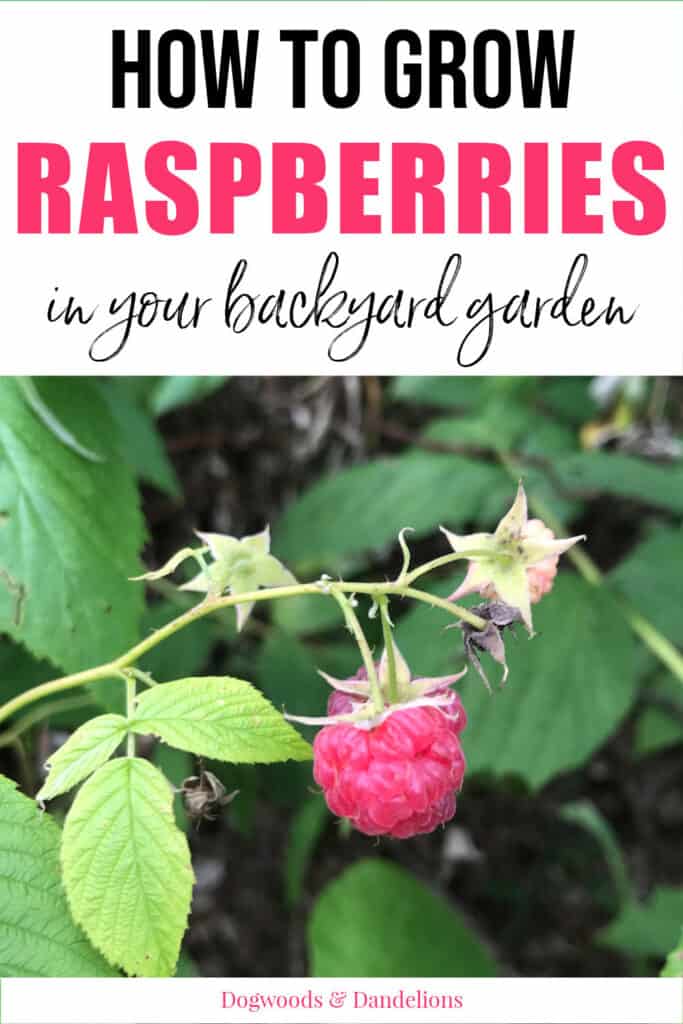How to Grow Raspberries
Raspberries are a great fruit to grow in your backyard garden. If taken care of, your raspberry plants will produce fruit for years to come. These tips and tricks will teach you how to grow raspberries in your home garden.
When & Where Should I Plant Raspberries
Raspberries are a perennial, so they will come back every year. They need a location in full sun, though if it is extremely hot where you live, some afternoon shade can be helpful.
Plant raspberries 3 – 4 feet apart in well-drained soil. Raspberries are extremely prone to root rot, so don’t plant them in an area that stays wet. They can be planted in raised beds to help with drainage.
Water regularly, but be sure the raspberry plants don’t sit in water for long. When digging the hole for the plants, it is a good idea to add a handful of compost to help improve drainage, especially if you have clay soil.
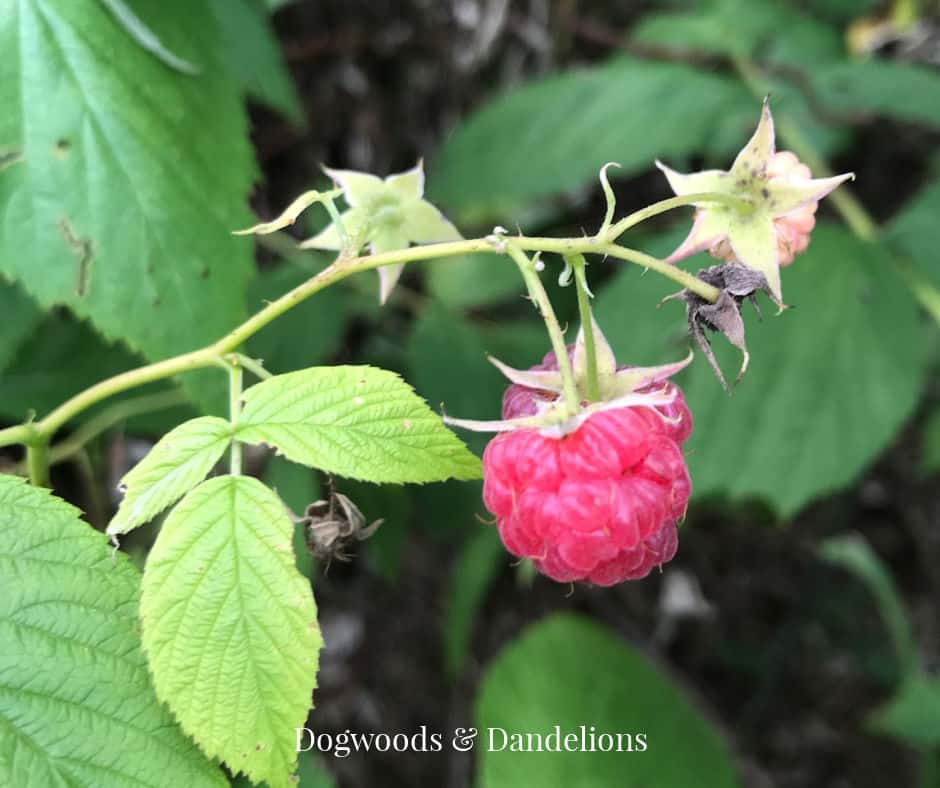
Affiliate Disclosure: Please note that some of the links in this article may be affiliate links and I may receive a small commission if you purchase something through a link. It will not change your cost. As an Amazon Associate, I earn from qualifying purchases. For more information, see my disclosures page.)
The best time to plant raspberries is in early spring. If you purchase bare root stock, soak the plants in water for about 6 hours or so.
If you have a friend that has raspberries, they may be more than happy to dig some up for you. Raspberries spread via underground runners and each year these runners send up new plants. They have to be dug up, otherwise, you’ll have a raspberry thicket instead of a raspberry patch.
Keep this in mind when choosing the location for planting your raspberries and allow room for them to spread. You will also have to dig up some of the runners each spring.
So choose your location carefully. Your raspberry plants will be there for years to come.
Types of Raspberries
There are two types of raspberries, everbearing and summer bearing. But before we discuss the two types, we need to discuss the two types of canes that raspberries produce. (Stick with me. This will make sense when we talk about the two types.)
Primocanes vs. Floricanes
Primocanes are the first canes you will see when you plant your raspberries. They are also called first-year canes. They are young, fast-growing canes with lots of leaves. (See picture on the left, below.)
Floricanes are second-year canes. You won’t see any of these until the second year of growing your raspberries. Floricanes are brown and woody. You may even think they are dead canes in early spring before the leaves pop out.
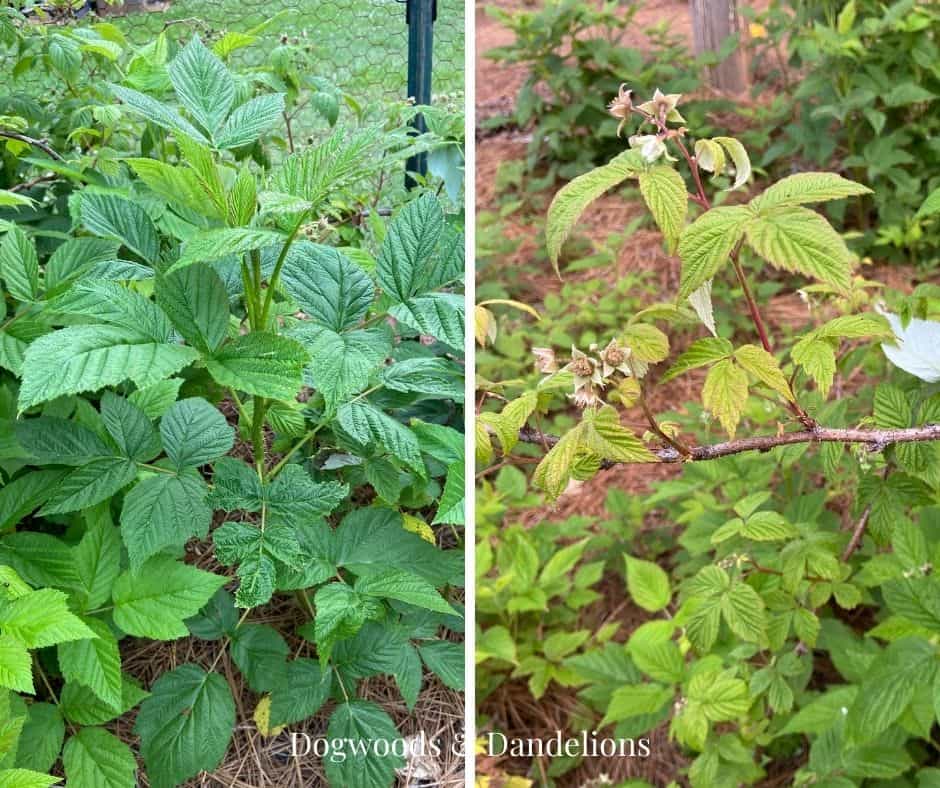
However, don’t cut the floricanes back until you know what type of raspberries you have. Instead of putting energy into leaves, the second-year canes of some varieties put their energy into flowers and fruit. You will see leaves come out on the floricanes, but there won’t be nearly as many as on the primocanes.
Everbearing vs. Summer bearing Raspberries
The reason we discuss the types of canes is so you can choose what type of raspberry you want to grow. Summer-bearing raspberries will produce their fruit during June and July on first-year canes only. They produce a lot of berries over a short period of time, usually about 6 weeks long.
Everbearing raspberries produce fruit on second-year canes during the summer. If you cut back those dead, woody-looking stems in the spring, you won’t get a flush of summer berries.
But the beauty of everbearing raspberries is that they will produce a small crop of berries on the floricanes in early summer, but then later into the summer and fall, they will produce a large crop of raspberries on the primocanes. You can harvest raspberries all summer long! (We harvest raspberries from June until November in my Zone 7 garden.)
Maintaining Your Raspberry Bushes
When learning how to grow raspberries, you also need to learn how to maintain your raspberry patch. While raspberries are fairly low-maintenance, there are a few things that need to be done each year to improve your harvest and keep your patch tidy.
Fertilizing and Watering Your Raspberry Patch
Fertilize your raspberries in early spring with a 10-10-10 fertilizer. The best time to fertilize is when the canes are emerging from the ground.
Raspberries need about 1″ water per week. (A rain gauge is helpful to know how much water your garden is receiving.) If Mother Nature doesn’t provide the rain, you should plan on watering.
Keeping Your Raspberries Tidy
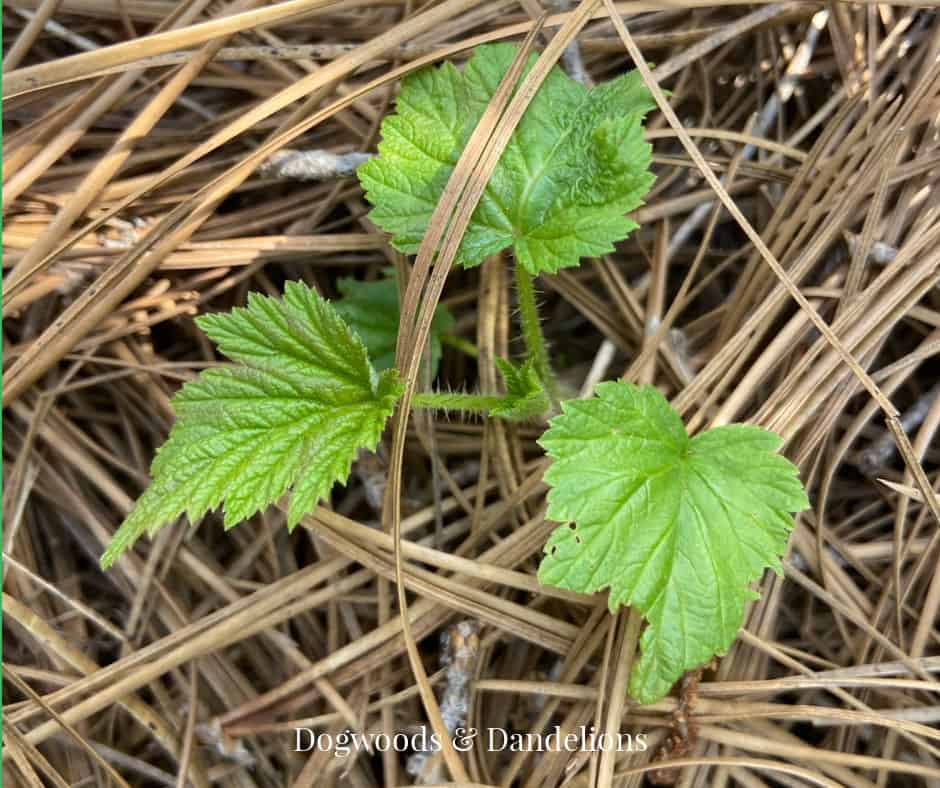
As I mentioned earlier, raspberries grow and spread via underground runners. To keep them from taking over, you will have to dig some out each spring.
If you notice plants growing in places you don’t want them, dig them out and replant them, throw them away, or give them to friends. If you don’t dig some of these out, you will have a raspberry patch so thick that you can’t actually get to the berries in the middle.
How to Prune Raspberries
Each spring, remove any dead or diseased canes and any small or weak ones. The best time to do this is once the plants start producing leaves. Otherwise, you may accidentally cut the floricanes too which will significantly reduce your harvest.
If your raspberry bushes get too tall, you can cut them back a bit. But don’t cut more than 1/4 of the cane or you risk reducing your harvest.
In the fall, after you have harvested all the raspberries, cut the second-year canes to the ground. They are done producing. If you miss any, you can cut them back in the spring. They are easy to spot then as they will not have any leaves on them.
Do You Need to Trellis Your Raspberries?
If you are growing summer bearing raspberries, they do need to be trellised. The canes are often weaker than everbearing raspberries and may break off under the weight of the fruit if they aren’t trellised.
However, for everbearing raspberries, the decision is up to you. As long as you keep the plants thinned, it isn’t really necessary.
If you want to learn to make a trellis, Gardening Know How has a great tutorial.
How to Harvest Raspberries
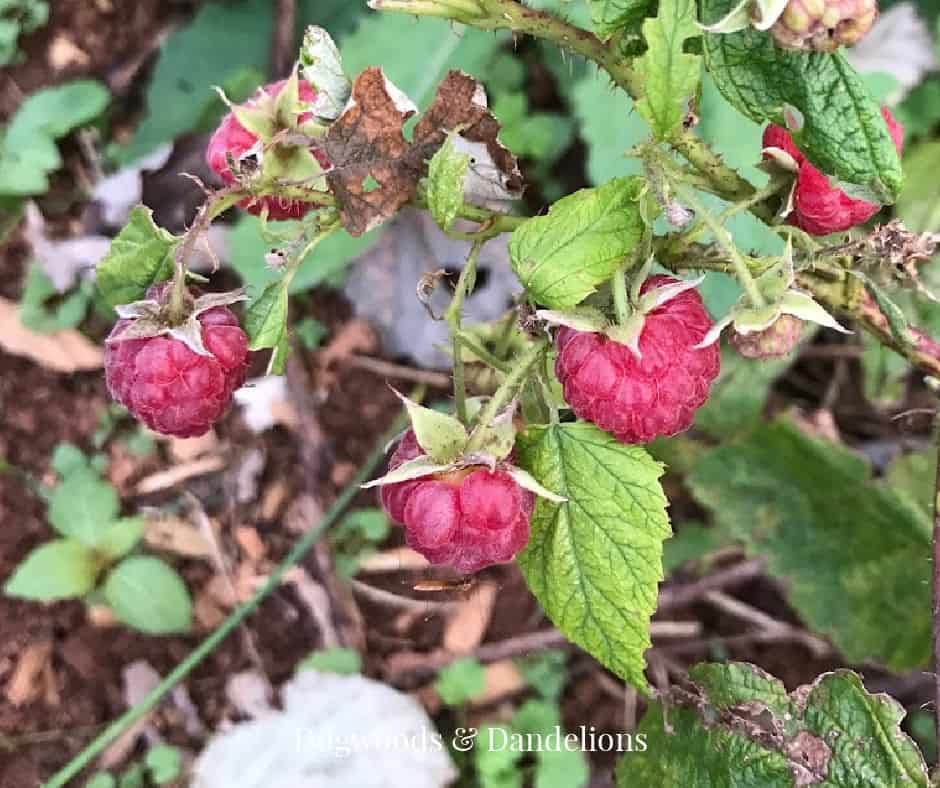
Harvesting raspberries is quite easy. When you pick your raspberries, the berry should just slide right off the plant when you gently pull it. If you encounter any resistance, the berry isn’t fully ripe.
Don’t pile raspberries too high in your bowl. If you get too many layers of berries, the weight of them will start to crush the berries on the bottom. Use several shallow dishes when picking the berries.
Pests
Unfortunately, there are many pests that like your raspberries too. Japanese beetles, birds, aphids, and various other bugs love to make a meal from your raspberry patch.
Keeping Birds Out of the Raspberry Patch
For birds, the best thing to do is cover your raspberries with bird netting. This usually works to keep the birds from stealing your precious berries. The best time to cover the plants is just before the berries ripen.
The one downside to using the bird netting is that it can be a bit difficult to move around. The netting gets hung on the raspberry canes and if not moved gingerly, you can pull raspberries off with the netting.
The other problem with netting is that the canes can grow through it, creating a bit of a mess too. However, this is the only thing I’ve found to keep the birds out of my raspberry patch.

Pest Control for Raspberries
Lots of insects love to eat your fresh raspberries too. Some of the more common ones include aphids, Japanese beetles, leafhoppers, raspberry beetles, and cane borers.
For a small raspberry patch, handpicking is always my first line of defense. Either squish the bugs or drop them in a bucket of soapy water.
However, if you have a large infestation, a spray such as Bonide’s Captain Jack’s Dead Bug Brew will control most insects. It contains spinosad, which is suitable for organic gardening.
Before using any pest control method, always do your own research to be sure that you are comfortable using it in your garden and that it will work to kill the pests you are using it for.
Raspberry Diseases
Raspberries are also susceptible to quite a few diseases such as cane blight, spur blight, verticillium wilt, botrytis fruit rot (gray mold), and anthracnose.
For many of the fungal diseases, prevention is the best option. Only water your plants from the bottom to prevent moisture on the leaves.
Keeping your raspberries thinned so air can flow through the patch will also help keep many fungal diseases at bay.
Many, but not all, fungal diseases can be treated with Neem oil or a horticultural oil. If you aren’t sure what disease you are dealing with, it is best to check with your local agricultural extension office. They can help you diagnose the disease and give you proper treatment options.
Summary
Learning how to grow raspberries will be very rewarding. The sweet, juicy fruit you harvest each summer will make the minimal effort totally worth it. Have questions about growing raspberries? Drop them in the comments below.
Related Posts
